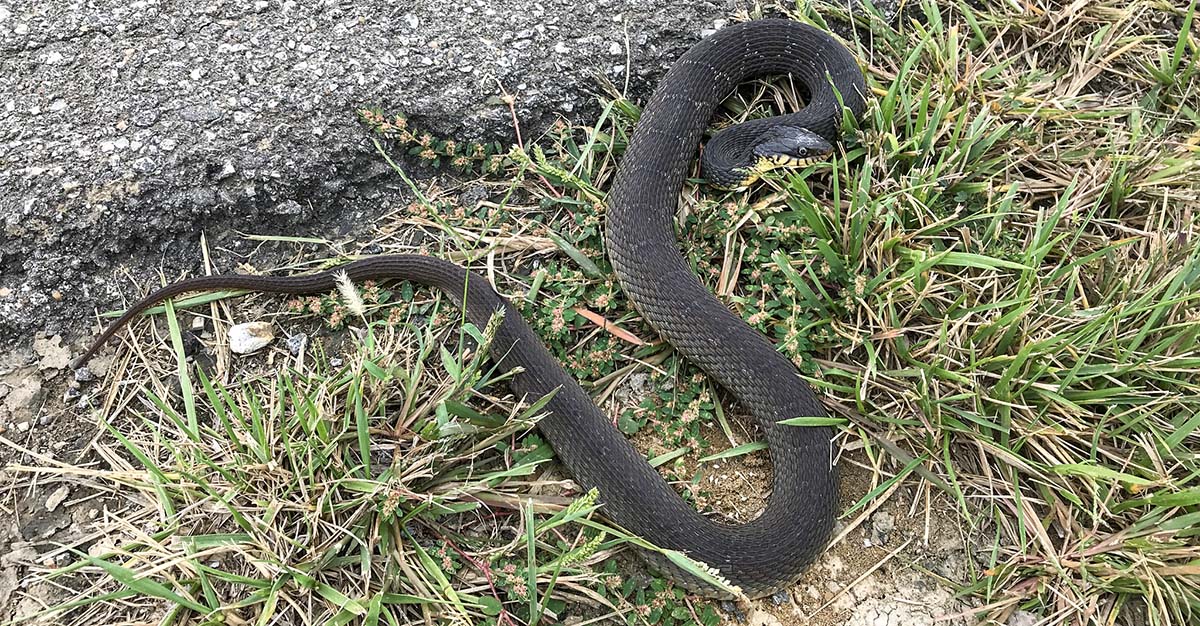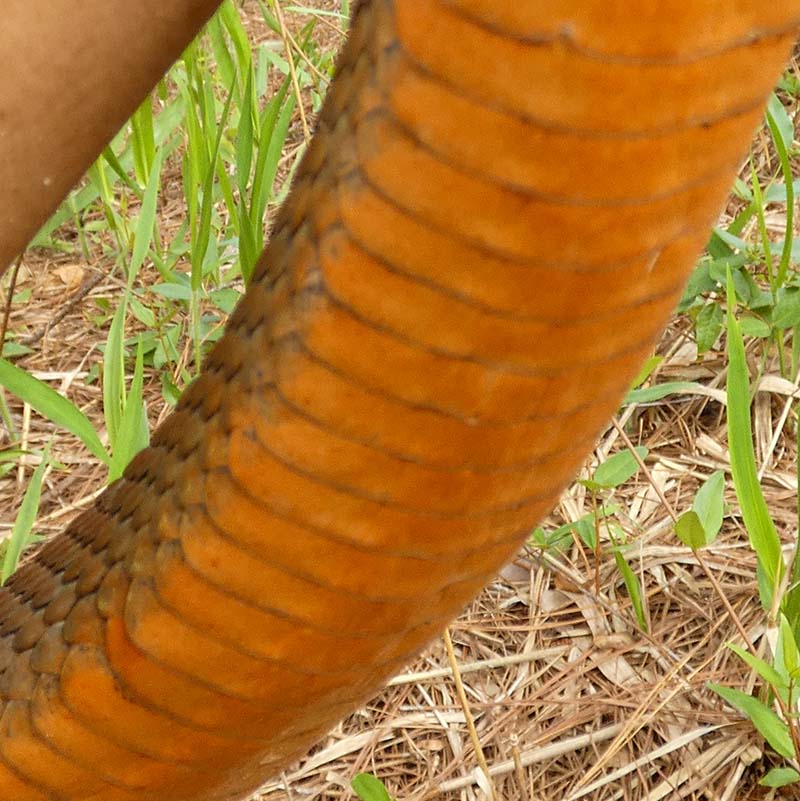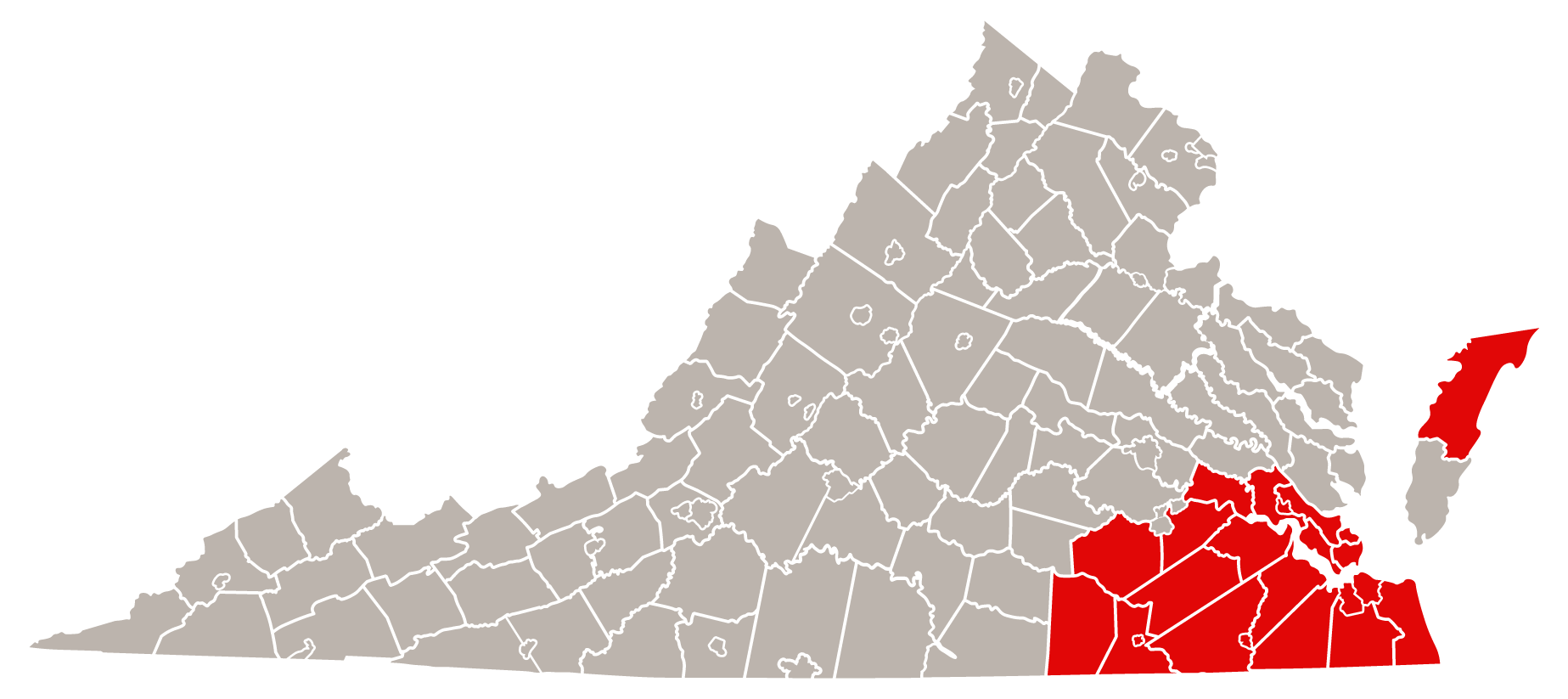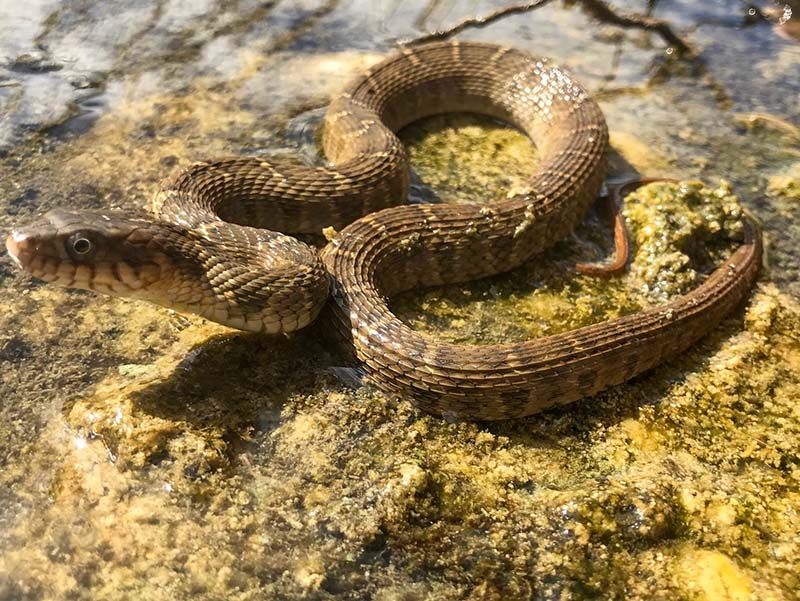
- Scientific Name
- Nerodia erythrogaster
- Range
- Southeast Virginia
- Also Known As
- Blotched Watersnake, Copperbelly
- Venomous
- No
- Features
- Plain Unmarked Belly
- Prey
- Amphibians, Fish, Crayfish, Salamanders
- Litter Size
- ~18 Eggs per Birth
- Life Span
- 8 - 15 Years
- Length
- 30 - 48 Inches
Quick Links for Plain-bellied Watersnake
Plain-bellied Watersnake Description
Plain-bellied Watersnake Appearance
This snake is solid colored, and can be brown, gray, olive, greenish-gray or black in color. These snakes can be identified from other watersnakes by their plain, no-pattern colors. This means that their bellies are a single color, and contains no patterns or markings.
Some subspecies of this snake can have dark blotches on it’s back.
Size
This snake is usually between 30 to 48 inches long, however, the record length for this snake is about 62 inches. The record found in Virginia is 58 inches.
Juveniles tend to be 11 inches long.
Plain-bellied Watersnake Behavior
They are non-venomous, however if threatened they will not hesitate to strike repeatedly and flatted their head.
It is illegal in Virginia to keep Wild Snakes as pets
Range and Habitat of The Plain-bellied Watersnake
Range
They can be found in South East Virginia, although there are some reports that they might be found in the Stafford and DC Area. Their range extends all across the south near the waterways.
Habitat
Anywhere there is a permanent water source, the Plain-bellied Watersnake can be there. But they are most frequently seen near rivers floodplains, lakes, ponds, and any natural wetlands. Due to Virginia’s winters, they do not venture past Richmond because of the cold. However, this Watersnake spends more time on land than other Watersnakes.
Diet of Plain-bellied Watersnake
Their diet consists of fish, crayfish, salamanders, and frogs. Due to it spending a lot of time on land, this snake includes a large quantity of amphibians. They capture and swallow their prey alive without using constriction.
Reproduction and Young
Reproduction
Mating season for these snakes is between April and June, and broods between 5 to 27 have been documented. They are polyandrists which means the females will mate with multiple males.



